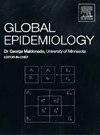Vitamin D deficiency in Ukraine: A multicentre cross-sectional study
引用次数: 0
Abstract
Background
Available epidemiological data on vitamin D status in the Ukrainian population are limited.
Objective
The aim of this study is to investigate the prevalence of vitamin D deficiency in Ukraine.
Methods
This multicentre cross-sectional study included a total of 11,462 participants: 1530 children with a median age 10 years, (IQR 6–14) and 56.21 % of them were female; 9932 adults with a median age of 36 years (IQR 26–48) and 78.72 % of them were female. Serum 25-hydroxyvitamin D (25(OH)D) levels were measured once by chemiluminescent immunoassay (UniCel DxI 800 Access Immunoassay System, Beckman Coulter Inc., USA) in the period of January–December 2021 in Kyiv and Kyiv Oblast. The cut-offs were: vitamin D deficiency, <50 nmol/L; moderate deficiency, 25–<50 nmol/L; severe deficiency, <25 nmol/L; vitamin D insufficiency, 50–<75 nmol/L; vitamin D sufficiency, 75–<250 nmol/L; optimal concentration, 75–<125 nmol/L; increased levels, 125–<250 nmol/L; and toxicity, ≥250 nmol/L.
Results
The median 25(OH)D level was 65.4 nmol/L (IQR 49.5–85.6) among all participants, severe vitamin D deficiency was recorded in 2.9 % of participants (95 % CI: 2.6–3.2), moderate deficiency in 23 % (95 % CI: 22–24), and vitamin D insufficiency in 37 % (95 % CI: 36–38).
Prevalence of vitamin D deficiency in group 1–17 years was 23.5 % (95 % CI: 21–26). We did not find vitamin D deficiency in children aged 1–2 years; however toxic levels were recorded in 4.2 % of the children in this age group (95 % CI: 1.4–9.6). Among the adults (≥18 years old), prevalence of vitamin D deficiency was 26 % (95 % CI: 25–27).
Conclusion
Vitamin D deficiency and insufficiency are common in Ukraine.
乌克兰的维生素 D 缺乏症:多中心横断面研究
背景有关乌克兰人口维生素 D 状态的流行病学数据十分有限。方法这项多中心横断面研究共纳入 11462 名参与者:1530 名儿童,中位年龄为 10 岁(IQR 6-14),其中 56.21% 为女性;9932 名成年人,中位年龄为 36 岁(IQR 26-48),其中 78.72% 为女性。2021 年 1 月至 12 月期间,在基辅和基辅州采用化学发光免疫测定法(UniCel DxI 800 Access Immunoassay System,美国贝克曼库尔特公司)对血清 25- 羟维生素 D(25(OH)D)水平进行了一次测定。临界值为:维生素 D 缺乏,50 nmol/L;中度缺乏,25-<50 nmol/L;严重缺乏,25 nmol/L;维生素 D 不足,50-<75 nmol/L;维生素 D 充足,75-<250 nmol/L;最佳浓度,75-<125 nmol/L;水平升高,125-<250 nmol/L;中毒,≥250 nmol/L。结果 所有参与者的 25(OH)D 水平中位数为 65.4 nmol/L(IQR 49.5-85.6),2.9% 的参与者严重缺乏维生素 D(95 % CI:2.6-3.2),23% 的参与者中度缺乏维生素 D(95 % CI:22-24),37% 的参与者维生素 D 不足(95 % CI:36-38)。我们在 1-2 岁儿童中未发现维生素 D 缺乏症,但该年龄组有 4.2% 的儿童(95% CI:1.4-9.6)出现维生素 D 中毒症状。在成年人(≥18 岁)中,维生素 D 缺乏症的发病率为 26 %(95 % CI:25-27)。
本文章由计算机程序翻译,如有差异,请以英文原文为准。
求助全文
约1分钟内获得全文
求助全文

 求助内容:
求助内容: 应助结果提醒方式:
应助结果提醒方式:


